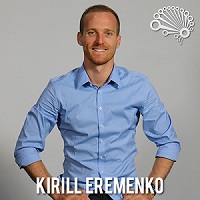This is Five Minute Friday episode number 46: What is Reality?
So recently I’ve been doing quite a lot of work on the Deep Learning A-Z course and it’s been really interesting to compile a huge repository of information on how computers learn and how machines learn and how we are emulating the human brain in machines and it’s been a big project of research into both computer science and some neuroscience as well. And throughout this process, I’ve become more and more curious about the human brain and the fact that we can reconstruct something as complex as the human brain through artificial neural networks has been really mind boggling. So if you haven’t started looking into deep learning, I highly recommend to do that.
And not just because we’ve published a course on deep learning, also simply because that’s the future, that’s where everything is going, that’s how self-driving cars drive themselves, that’s how Siri can understand what you’re saying, that’s how Facebook recognises faces in photos. It’s just that’s where the world’s going and it’s very easy to transition into that space from data science. And you might like it, you might find it interesting. So that’s definitely something to look into. But for me, it’s really given me interesting perspectives on who we are, who are we as humans. How are our brains constructed.
There’s lots of different models in deep learning, and one of them which is specifically interesting is called convolutional neural networks, and it allows us to create ways for computers to see, for computers to be able to recognise objects in images and classify them. And just by studying that, I started asking myself the question, how do we actually see? What do we see? And through researching this, I came across a very interesting TED talk which I just finished watching by Donald Hoffman, it’s called “Do we see reality as it is?” And it’s got 2 million views on TED, so if you haven’t seen it, then I highly recommend it.
And I just wanted to share with you a quick snippet from that talk, which is very interesting. Basically, Donald Hoffman says that if you have a visual experience, for instance as he derived this example, if you see a red tomato in front of you, does that really mean there’s a red tomato in front of you? And he argues that based on lots of experiments that he’s done, simulations and the theory of evolution, there actually isn’t a red tomato in front of you. There’s something in reality which our brain reconstructs as a red tomato in our consciousness. But in reality, it is nothing like a red tomato, it doesn’t look like a red tomato, it doesn’t smell or anything. But he was specifically talking about vision. So it doesn’t look anything like a red tomato. And that is very, very interesting.
And the analogy that he draws is your desktop. This really drives the point home. So if you have on your desktop a file which is rectangular and it’s blue and it’s in the bottom right corner, does that really mean that your file in your computer is blue, and it’s in the bottom right corner and it’s rectangular? Well, obviously not. That is just a representation of what is happening in your computer and it’s there specifically to help us to hide what is happening inside the computer from us so that we can focus on working with our file or editing our photos and writing that email.
But in reality, in the reality of the computer, what’s happening is completely different to what we’re seeing on the desktop. And he says that our consciousness is like a user interface. Like your desktop is a user interface for your computer. Well our consciousness, our brain, creates this user interface for us which is a way for us to navigate the real world. But in reality, this real world that we’re interacting with is completely different. And he’s not just saying it could be completely different, he actually has proven through his Monte Carlo simulations that he’s been running in his lab that it is completely different. That evolution favours species or organisms which are not aligned to see reality as it is, but which are aligned to a fitness function. And a very interesting TED talk, so if you’re interested in those types of things then definitely check it out. And for me, it’s very interesting because it also coincides with what I’ve been experiencing and learning in the space of deep learning as well.
So there we go, something to think about, is reality what we actually see it to be, or is there something much more to what reality is? And on that note, I hope you have a great weekend and I will see you next week. Until then, happy analyzing.


